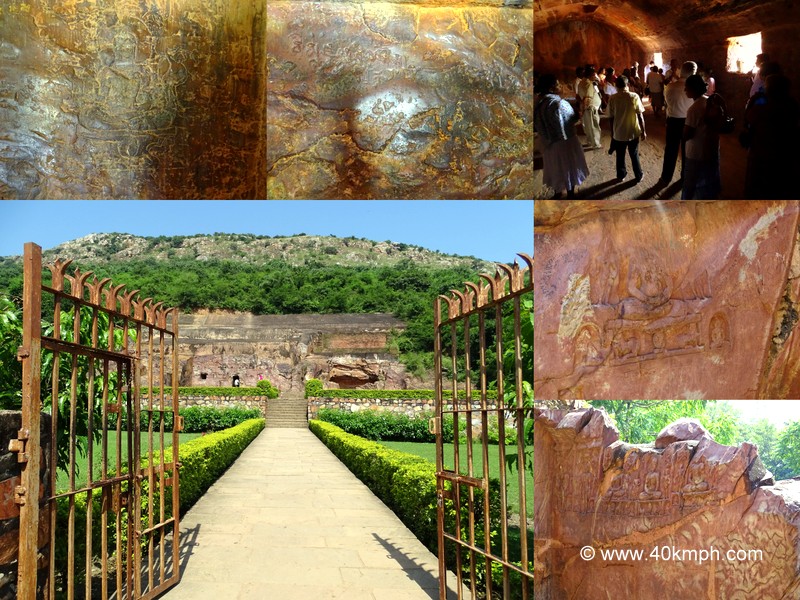The great Jain sage Vairadeva ji got the two caves constructed in the 3rd or 4th century A.D. These caves were meant for meditation. According to legend, these caves were King Bimbisar’s treasury. Hence, these are also known as ‘Swarn Bhandar.” The eastern cave was two-storeyed high and the statue of Jain arhats were installed in the cave. A fine image of Vishnu riding on Garuda belonging to the Gupta period was found in the cave which has been kept in Nalanda Archeological Museum.
Source: Forest and Environment Department, Bihar
Laxmi Narayan Upadhyay – a local guide upon our arrival at Son Bhandar Caves further enhanced our knowledge by sharing The History of Sone Bhandar Caves as follows:
– Sone means Surang (tunnel) and the length of the tunnel is 3 miles.
– At hot water springs after climbing 565 steps there is Saptparni Cave and Pipli Cave. It is said Sonbhandar caves are connected with them but both side tunnel entrance is closed.
– Those days the King of this area was Bimbisar. Ajatshatru (son) killed Bimbisar by prisoning him. Bimbisar’s wife Kaushalya after his husband’s death donated all her wealth to Jain Muni Gautam Swami. As he was a sadhu and does not require wealth, he kept all the wealth inside this tunnel and closed it with a huge rock, and wrote a few mantras in Shankh lipi. Whoever is able to read the mantra will be able to open the rock to enter the tunnel. When Englishmen ruled India, they tried to break the tunnel entrance via cannon (तोप) but were unable to succeed and that is why you can see a black mark on the entrance rock.
– Shankh Lipi was taught at Nalanda University but Bakhtiyar Khilji burn all three libraries at Nalanda University to ashes. He also destroyed idols present on Sonbhandar cave walls.
– Aadinath, and Parshvanath idols were recovered from these cave holes. Due to security, it is kept in Nalanda Museum.
– Few pillars outside the cave and a verandah and a two-storeyed Jain temple were destroyed in the 1934 earthquake.
– Rajgir was earlier known as Grih Braj.
Wonderful narration. Thank you – said I with donations. Knowledge enhanced for sure.
